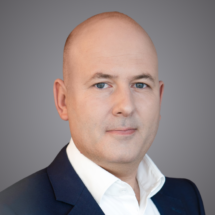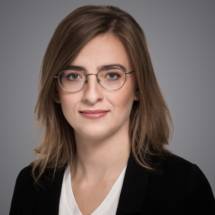3. Description of rivaroxaban and history of patent protection for Xarelto
Rivaroxaban is an active substance used in the prevention and treatment of thromboembolic diseases. Its introduction to the market (under the trade name Xarelto) by Bayer represented a breakthrough in anticoagulant therapy.
A patent for the active substance, No. EP1845961, was granted by the European Patent Office (EPO) and relates to a specific dosing regimen for rivaroxaban – “not more than once a day for at least five consecutive days”. This patent is an example of the aforementioned second medical use patent, as the active substance itself (rivaroxaban) was already known and subject to other patents. The patent claims do not specify the dosage of the active substance.
After the basic patents for rivaroxaban expired, generic equivalents of Xarleto began to appear on the market, including those manufactured by Polish generic manufacturers. In response, Bayer took legal action to block the sale of these products, arguing that their once-daily dosage regimens infringed its patent rights. The dispute was global, and the patent courts were divided in assessing the validity of patent No. EP1845961 (and its equivalents in other jurisdictions):
- patent protection was maintained in: Belgium, the Netherlands, Sweden, Norway, and Germany; and
- patent was revoked in: France, UK, and South Africa.
Although the territoriality principle formally excludes the relevance of rulings in other jurisdictions to Polish verdicts, the European status of patent No. EP1845961 justifies a brief summary of the positions of courts in other EU countries.
One of the courts that upheld the validity of the patent was the Brussels Commercial Court, which held that the absence of patent claims relating to the dosage of the active substance did not affect the validity of the patent itself. According to the Belgian court, the fact that rivaroxaban remains effective with a single dose for at least five days was sufficient for the invention to be considered applicable. This factor alone justified the application of patent protection. The Belgian court reiterated the position of the EPO Board of Appeals that a detailed claim is not necessary if a skilled person, who has common general knowledge at their direct disposal, is able to apply the invention in practice without having to demonstrate inventive skill.
Another important ruling in the case is a decision of the District Court of Munich in Germany, which granted security for Bayer’s claims. Pursuant to the decision, the German court prohibited the generic company from manufacturing, offering, marketing, using, importing and possessing rapid-release rivaroxaban tablets and capsules in Germany. The rationale behind such decision was that the generic product infringes the rights under the patent in question.
The Munich court noted that the clinical trial for the single daily use of rivaroxaban concerned only the 30 mg dose of the active substance, but did not consider that this fact excluded patent protection as regards other, lower doses of the substance. The failure to establish the minimum effective dose of the active substance during clinical trials was justified on ethical grounds. In this respect, an intellectual analysis was used which extrapolated the efficacy results of the highest dose of the active substance to lower doses.
On the other hand, a court in Paris, which challenged the validity of the patent, noted the public availability of the results of studies on the use of a single daily dose of rivaroxaban, prior to the granting of patent No. EP1845961, and concluded that the invention was obvious and did not require patent protection.
In Poland, a court assessed whether there was sufficient likelihood that Bayer’s claim was valid. The District Court in Warsaw [4] decided to dismiss Bayer’s application for patent protection. The justification to the judgment presents valuable guidance for patent attorneys and lawyers dealing with patent law in the pharmaceutical market. The court presented the following issues:
- the problem with the specific scope of patent protection. The patent does not specify the doses of the active substance, and contains only a general phrase ‘not more than once a day’. The court held that this broad wording prevents professionals from practicing the invention which results in violation of the requirement of sufficient disclosure (Article 83 EPC);
- the issue of inventiveness. The court emphasised that the clinical trials conducted on patients by Bayer concerned only one specific dose (30 mg once a day). However, the patent claim does not contain information on the dosage of the active substance. In the court’s view, extending the patent protection to dosages that are not apparent from the description of the trials and the wording of the patent claims themselves would lead to an undue extension of the scope of protection;
- The question of obviousness of the invention. The court referred extensively to a decision of a British patent court in an analogous case. According to the British court, the disputed patent protection for a once-daily dose concerned an issue previously discussed in publicly available scientific papers concerning one dose of rivaroxaban per day. The court clearly stated that dosage regimens alone, without specific data to support their non-obviousness, should not be patentable.
With regard to the issue of a patent for second medical use, it should be noted that the Guidelines of the President of the Polish Patent Office on new medical use do not specify this issue. They indicate that “The distinguishing feature of a second medical use solution from the known state of the art may be, inter alia: a new medical indication; a new, non-obvious patient group, distinguishable in terms of its physiological or pathological status and at the same time having no part in common with the group to which the therapy was applied in the past; a new regimen of administration of medicinal products; a new dosage scheme“. However, the President did not clarify how the new regimen and dosage scheme should be understood.
As the Polish court pointed out, it is established case law of the EPO Boards of Appeal that the achievement of the claimed therapeutic effect is considered to be a functional technical feature of claims for further medical use. In order to satisfy the requirement of sufficient disclosure, the therapeutic efficacy of the composition and dosage regimen for the claimed therapeutic indication must be plausible. Reliability, in turn, should be based, firstly, on a precise indication of the dosage and, secondly, on reliance on the patent description on experimental data. The EPC specifies that the reapplication of a solution is patentable, provided that it is applied in a well-defined manner. In other words, according to the court, a second medical use patent relating to a new dosage regimen for an active substance should explicitly indicate the dosage.


